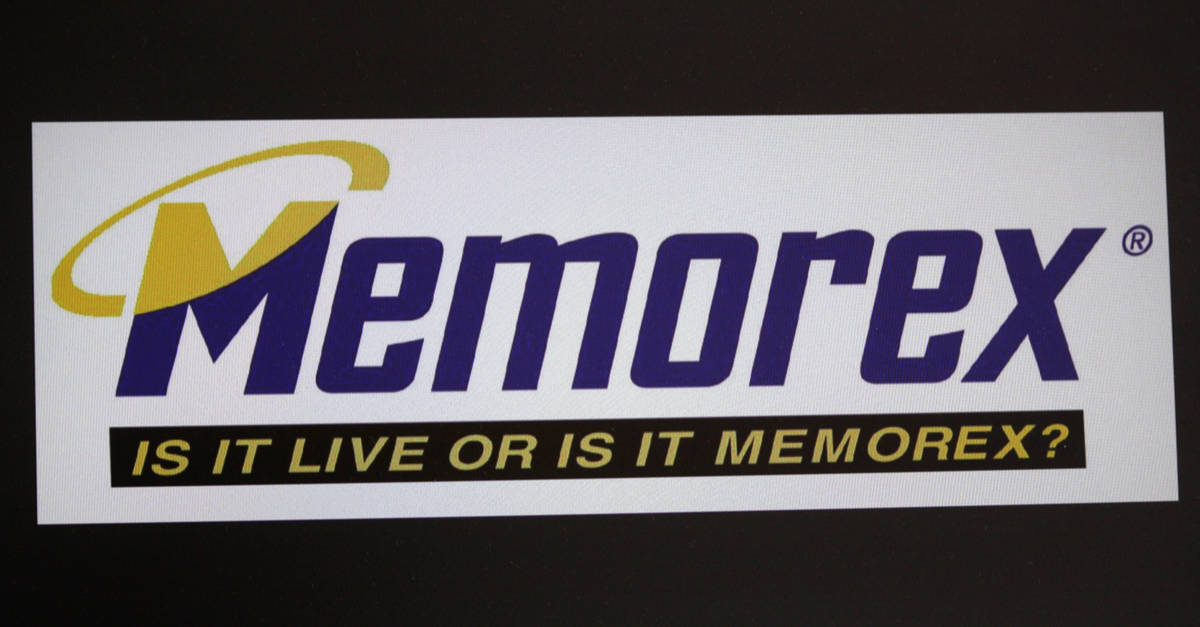Key Points:
- The founders of Memorex, such as Laurence Spitters, developed a manufacturing process to make quality chromium dioxide computer tape.
- By founding Memorex in Santa Clara, the company became the first computer start-up in Silicon Valley.
- The brand rights for Memorex are currently owned by Digital Products International, which markets audio equipment like microphones and karaoke machines.
The History of Memorex: What to Know
The Memorex company began in the early years of computer technology. At this point, reel-to-reel tapes were the primary means of data storage. The founders of the company developed a manufacturing process that made reliable chromium dioxide computer tape. In 1961, a group of engineers led by industrialist Laurence Spitters opened the company facility in Santa Clara, California.
The company focused primarily on the computer industry, especially in developing peripherals compatible with IBM equipment. However, within a decade they had branched into the consumer audiotape market. In this regard, the company is known for its 1972 ad campaign with jazz singer Ella Fitzgerald that asked, “Is it live, or is it Memorex?”
Quick Facts
- Year Founded
- 1961
- Founders
- Laurence Spitters
- Industry
- Computers, technology, and multi-media recording products
- Headquarter
- Cerritos, California
- Key People
- Laurence L. Spitters, Arnold T. Challman, Donald F. Eldridge, and W Lawrence Noon
- Notable Products
- Computer Data Tape, Audio Cassettes, Hard disk drives
In 1981, the Burroughs Corporation purchased the company primarily for its business divisions that manufactured disk drives and other computer peripherals. Through the 1980s and 90s, Memorex continued to produce both computer products and audio media like tapes, CDs, and DVDs. However, the fast pace of hardware development coupled with the growth of digital audio technology led to the company declaring bankruptcy in 1996.
Today, the Memorex brand name is still in use for audio products. Tandy purchased the brand rights in 1982. They were acquired by Imation in 2006 for $300 million. Imation sold the name to Digital Products International in 2016. The current owner markets audio equipment like microphones and karaoke machines. While a karaoke machine is far from where the company started, the name still carries weight as a sign of audio fidelity.
The Founding of Memorex: How It Happened
Memorex began through the work of several engineers from the Ampex company. This business began manufacturing reel-to-reel tape players in the 1940s. A group within the Ampex family realized that the technology that created the magnetic tape for audio recordings was also necessary for the growing computer industry. They incorporated innovations like manufacturing in cleanrooms to prevent waste and lower costs.
By founding Memorex in Santa Clara, the company became the first computer start-up in Silicon Valley. It would not be long before the company took a deeper dive into the computer industry by manufacturing IBM-compatible hardware.
Memorex Through the Years
1961-1970
Memorex focused on the business computer industry in its first decade. They began with reel-to-reel computer tape. Then, they expanded into developing computer hardware that was plug-compatible with IBM computers. As their reputation grew, they began to market complete computer systems.
1971-1980
In 1971, Memorex entered the consumer market for audio tapes, the product for which they are best known. At the same time, the computer division was experiencing challenges from IBM, leading to an antitrust lawsuit in 1973 that would not be resolved until 1981.
1981-1986
In 1981, Burroughs acquired Memorex for $117 million. This company focused on the business divisions of Memorex and sold the consumer brand to Tandy in 1982. In 1986, Burroughs, now Unisys, handed over the company for $550 million to an international partnership led by Georgio Ronchi. The new company, Memorex International MV continued to produce computer tape and flexible disks.
1987-1996
Memorex struggled in its final years to maintain profitability. The company eventually declared bankruptcy in 1996. In 1993, Tandy sold the consumer brand to Hanny Holdings of Hong Kong.
1997-2016
After the bankruptcy, a few international Memorex divisions remained into the early 2000s. The Memorex brand was still in use for CDs and DVDs. Imation acquired the brand in 2006 for $300 million. In 2016 Digital Products International purchased the brand for $9.4 million, marketing audio equipment like headphones and karaoke machines under the Memorex name.
What are the most important products from Memorex?
Data Backup Tapes
Chromium dioxide computer tape was the product that launched the company brand in 1961. The company became a reliable source of data recording products for the growing computer industry.
Hard Drives
Although Memorex delved into hardware like computer peripherals and systems, their hard drives were the longest-lasting computer product. The hard drive division continued as a separate entity for several years after the bankruptcy.
Audio Cassettes
Recordable audio cassettes are Memorex’s most famous product. Most consumer marketing efforts in the 1970s focused on these products and their reputation for audio quality.
Other Media Recording Products
As audio and data recording needs changed, the company launched several other media products. The reputation for high quality transferred from tapes to CDs and DVDs.
Is it live, or is it Memorex?
Although this slogan is not a physical product, it has had a cultural effect that outlived the company. “Is it live, or is it Memorex?” is still a phrase used to question the authenticity of a statement or event.
How Did Memorex Make Money?
At the start of the company, Memorex made money through the sale of high-quality computer backup tapes. Their production process for chromium dioxide tape reduced waste and increased profits. The company expanded into the manufacture and sale of IBM-compatible peripherals and complete computer systems. In 1968, the company premiered the first IBM-compatible disk drive that competed with IBM products.
The most profitable products for the company involved data storage. The Memorex business division produced, maintained and repaired hard disk drives throughout the company’s existence. Their line of consumer products included cassette tapes, CDs, and DVDs.
Memorex Acquisitions
The acquisition history of Memorex follows two paths. The business company separated from the consumer brand in 1982. While the original company went bankrupt in 1996, the Memorex brand exists today as a line of audio hardware marketed by DPI.
Burroughs
In 1981, the Burroughs Corporation acquired the company for $117 million. Burroughs hoped to take advantage of Memorex’s disk drive technology and IBM peripheral manufacturing. The company sold off the consumer branch to Tandy in 1982.
Memorex International NV
Memorex struggled to be profitable for Burroughs due to changing technology. In the mid-1980s, the company began to dissolve its Memorex-related assets. In 1986, an international group of Memorex leaders sought to reorganize the company as Memorex International NV. The new business had its headquarters in London and was led by Giorgio Ronchi. This venture was the final incarnation of the company business line. The company declared bankruptcy in 1996.
Imation
On the consumer path, Tandy purchased the commercial brand in 1982. In 1993, this company sold the brand to Hanny Holdings. Imation, a company specializing in data storage, acquired the company consumer brand in 2006 for $300 million. Imation marketed their lines of CDs and DVDs under the Memorex name.
DPI
When Imation closed its audio media division in 2016, it sold the Memorex brand to Digital Products International for $9.4 million. DPI markets headphones, portable media players, karaoke machines, and other audio hardware under the Memorex name.
Memorex Notable Controversies
IBM vs. Memorex
In 1970, IBM sued Memorex stating that the company had stolen and used trade secrets in their peripherals. The case was dismissed with prejudice in 1972.
In 1973, the company filed an antitrust suit against IBM. The company asserted that the computer giant was deliberately undercutting prices and using tactics such as lawsuits to prevent competition. They also accused IBM of changing their hardware design specifically to make competitor peripherals incompatible. The Ninth U.S. Circuit of Appeals ruled in favor of IBM, and the Supreme Court declined to listen to the case in 1981.
The image featured at the top of this post is ©360b/Shutterstock.com.



